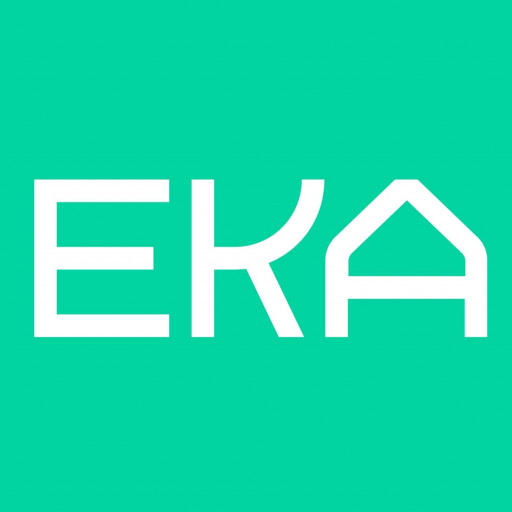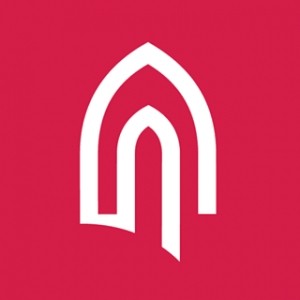Photos of university / #eka_estonian_academy_of_arts
The Graphic Design programme at the Estonian Academy of Arts offers students a comprehensive education in the principles and practices of visual communication. Designed to foster creativity, technical proficiency, and critical thinking, the programme prepares graduates to excel in a dynamic and diverse field. Students are introduced to the history and theory of graphic design, gaining an understanding of its evolution and cultural significance, which informs their own creative process. The curriculum combines foundational courses in drawing, typography, image editing, and layout design with advanced subjects such as branding, advertising, interface design, and multimedia communication. Practical assignments and collaborative projects mirror real-world industry scenarios, promoting teamwork and problem-solving skills. Emphasis is placed on developing a strong design philosophy, conceptual thinking, and the ability to translate complex ideas into effective visual messages. Students have access to state-of-the-art laboratories and workshops equipped with the latest digital and traditional tools, enabling them to experiment and refine their skills across various media. The programme encourages innovation and originality, supporting students to develop a personal design voice while adhering to professional standards. Throughout their studies, students engage with contemporary trends and technological advancements, preparing them for a competitive job market. The faculty comprises experienced professionals and researchers dedicated to mentoring and guiding students toward successful careers in design, advertising, publishing, and digital media. Upon graduation, students will possess a versatile portfolio and the confidence to contribute creatively and strategically to the visual communication industry. The programme emphasizes not only technical mastery but also ethical considerations and social responsibility in design practices. Graduates are well-equipped to pursue further research or to initiate their own projects within a variety of cultural and commercial contexts, making a meaningful impact through innovative visual storytelling.
Curriculum
The curriculum is structured to provide students the time, space, resources, and conversations in producing a body of work which frames their practice. This work is always supported by a teaching staff of actively practicing designers, and invited guests who give workshops, lectures, and critiques. The first year of the Graphic Design MA is facilitated by prompts which engage students to question and reflect upon their work. The second year asks that students come to define their work and practices as a whole. Students are expected to discuss their progress at the end of each semester, and outline their intentions for how to continue into the next academic term. Parallel to this will include topic specific courses which change each year, investigating and responding to contemporary issues, methods and ideas in graphic design.
First Year
In the first year, each student is asked to question their practice, interests, and intentions as a designer through the active process of making new work. This is facilitated by prompts and projects intended to encourage critical investigation, hands-on making, and iterative working. The core course components are:
- Studio - The program is organized around a studio model wherein practice is developed through formal investigations and applied projects. These can start from a combination of either prompts by the teachers, commissioned projects, or self-initiated work from the students. Regardless of the starting point, the work must be iterative, critical, and contribute towards the forming of a body of work. All work is supervised by weekly meetings either with the staff or visiting critics.
- Berlin Studio - During the second semester for seven weeks, the program will relocate to Berlin, Germany, supported by a teaching staff of local designers. The Erasmus mobility program has approved a stipend for all students to cover travel and accommodation costs.
- Theory - The theory course will support all practical studio work. Throughout the semester, students will meet with a theory teacher who will assign readings, lead discussions, organize lectures, and host screenings. The role of the theory teacher is to help students contextualize their work, position themselves in the contemporary world, and facilitate research that may eventually lead to their thesis.
As the first year progresses, these course components fold into one another, so that no work is done without the integration and support of the other. The work produced in the first year is intended to be reflected on, and students will be asked to find connections between their projects to serve as a starting point for defining their work in the second year.
Second Year
In the second year, students will begin to define their own projects and research towards a final thesis, with the ongoing support of a thesis advisor. In the third semester, students are required to choose electives (from the faculties of Architecture, Design, Fine Arts, and Art & Culture) which support this work, while the fourth and final semester is dedicated entirely to completing the thesis submission and graduation exhibition.
- Thesis - The thesis is understood as a cohesive body of work, organized from a collection of projects developed over the two years of study. It will present what your work is about and how you position yourself as a graphic designer. The final submission will take the form of a book, which must include a formal written thesis and the body of work that supports it.
Application candidates for the MA in Graphic Design program are expected to be self-motivated, able to work independently, question and further develop their practice, and show concern for issues and ideas which engage social, cultural and political contexts. Those who have studied a discipline outside of graphic design are encouraged to apply, but are expected to have an aptitude for critical inquiry and the ability to engage with design ideas at a high level. Candidates must have a bachelor’s degree.
Application deadline: 6 March 2023
Applications will be reviewed in early March, and selected candidates will be invited for an interview with the staff of the Graphic Design department. Interviews will take place on 16–26 March 2023, where applicants will be expected to come with their physical work and have a discussion about their intentions for the two years of study. A Skype interview can be arranged for those who cannot come for an in-person interview. Each year, 8–10 students will be admitted.
General requirements
— Must hold a bachelor’s degree
— Be proficient in both spoken and written English: TOEFL ITP 543 points, TOEFL iBT 72 points, IELTS 5,5 points and other tests
Application Requirements
Portfolio
— Digital PDF format, maximum 60 Mb
— Include 10–15 projects, with each project supported by a selection of 4–6 images and a 50-word description
— This can include a mix of professional commissions, self-initiated work, BA projects, unrealized and in-progress work, or projects from within other fields (where relevant)
— If including video work, use still-frames for the PDF, with an external link to the video
Letter of Motivation
— 500 words
— Include background, interests, influences, and the current direction of your work
— Identify the reasons for pursuing an MA in Graphic Design, expectations of the program, and intended use of the two years of study
CV
— Maximum 2 pages in length
The financing of the Graphic Design programme at the Estonian Academy of Arts is primarily supported through a combination of state funding, tuition fees paid by students, and additional financial instruments. As an institution of higher education in Estonia, the Academy benefits from government subsidies aimed at promoting arts, culture, and creative industries, which help to subsidize tuition costs and ensure accessibility for students. The state funding is allocated based on national education policies, the number of enrolled students, and the specific needs of the programme, including facilities, faculty salaries, and educational resources.
International students or those pursuing part-time studies may be required to pay tuition fees, which are structured according to the degree level and the student's nationality. The fees are established annually by the Academy and are generally competitive compared to other European art institutions. To support students financially, the Academy offers several scholarship programmes, which are based on academic achievement, financial need, or special talents in the field of graphic design. These scholarships aim to reduce financial barriers and cultivate local and international talent in the arts.
Additionally, students can apply for grants or sponsorships from external organizations, cultural foundations, or international mobility programmes such as Erasmus+ that facilitate exchanges and collaborative projects. The Academy might also have partnerships with industry stakeholders that offer internship stipends or project-based funding, providing practical financial support for students engaged in real-world design projects.
The university also encourages students to seek external financial aid and participate in project competitions, which sometimes include monetary rewards or subsidies to support their educational pursuits. For research-based or innovation-oriented projects within the programme, additional funding may be secured via European Union funds or national grants directed at creative industries development. Overall, the financing model of the Graphic Design programme is designed to ensure broad access to high-quality arts education while promoting sustainability and continuous development of the creative sector in Estonia.
Permanent faculty
Ott Kagovere, Else Lagerspetz, Sandra Nuut, Ivar Sakk, Indrek Sirkel, Sean Yendrys (Head of MA Curriculum)
Teaching staff
Rosen Eveleigh, Sara Kaaman, Lieven Lahaye, Laura Pappa, Manuel Raeder
Visiting teachers 2020–2021
Bart de Baets, Stuart Bertolotti-Bailey, James Langdon, Hanna Nilsson & Rasmus Svensson, Julia Novitch
Invited critics 2020–2021
Johannes Breyer, Siddhartha Lokanandi, Santiago da Silva
Collaborative project exchange with
Systemdesign class of Prof. Maureen Mooren and Malin Gewinner at Academy of Fine Arts Leipzig
Facilities
Each student is given a dedicated workspace located in the MA studio of the Graphic Design department at EKA. The studio is equipped with an A3 black & white laser printer, A3 risograph printer, and high-speed internet. Students are expected to have their own personal computer. Access is given to EKA workshops, including screen printing, letterpress, 3D printing, ceramics, prototyping lab, and a woodshop. The studio and workshops are part of the newly completed (in 2018) Estonian Academy of Arts building, which additionally includes a library and contemporary art gallery. Students have the opportunity to attend public lectures and events organized by other departments and programs in EKA, including from Contemporary Art and Curating, Art History and Visual Culture, Architecture and Urban Studies, and Interaction, Digital and Product Design, among others.


